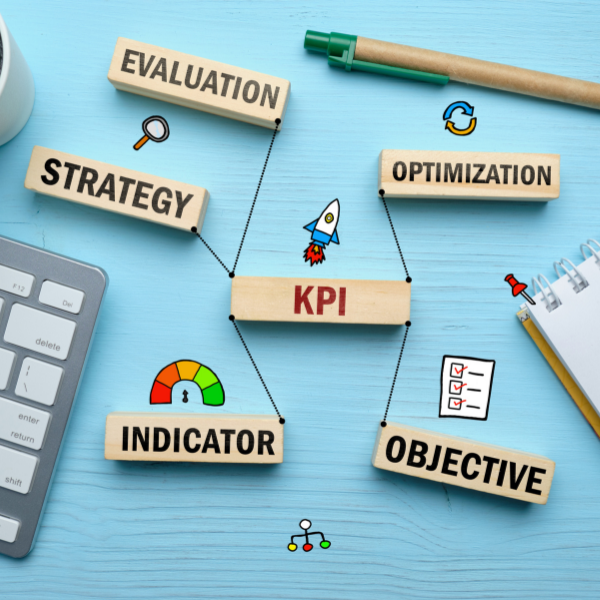At Crampton Consulting Group, we understand the unique challenges and opportunities faced by veterinary practices. In this article, we present five top tips to help you set effective financial KPIs for your veterinary practice, guiding you towards better financial management and growth.
1. Define Clear Objectives
The first step in setting financial KPIs is to clearly define the financial objectives for your veterinary practice. What are your long-term financial goals? Whether you aim to increase revenue, reduce costs, improve profit margins, or expand your services, these objectives will serve as the foundation for your financial KPIs.
2. Concentrate on Key Metrics
Selecting the appropriate financial KPIs is crucial. Concentrate on metrics that wield direct influence over your practice’s bottom line and reflect its overall financial well-being. Several pivotal financial KPIs for veterinary practices include:
Some essential Financial KPIs for veterinary practices to monitor include:
- Revenue: Revenue serves as the lifeblood of the veterinary practice, representing the total income generated from services provided to clients. Monitoring revenue growth and trends over time provides insights into practice performance, market demand, and client preferences. It helps evaluate the effectiveness of marketing efforts, service offerings, and client acquisition strategies, guiding revenue optimization initiatives for sustainable growth.
- Revenue per Veterinarian: This KPI measures the amount of revenue generated by each veterinarian in your practice. It provides insights into the productivity and efficiency of your veterinarians. Increasing revenue per veterinarian indicates improved efficiency in patient care, client engagement, and overall practice management, leading to enhanced financial performance.
- Average Transaction Value: The average transaction value represents the average amount spent by clients during each visit to your clinic. By tracking this KPI, you can assess the effectiveness of your pricing strategies, client education and upselling effectiveness. It helps identify opportunities to increase revenue per client visit, enhance service offerings, and optimise client communication to drive practice growth.
- Cost of Goods Sold (COGS): Analyse the components of your practice’s Cost of Goods Sold (COGS), encompassing expenses directly associated with delivering services, such as medications, surgical supplies, and laboratory fees. Understanding and optimizing COGS is crucial for enhancing gross profit margins and overall financial health.
- Gross Profit Margin: The gross profit margin indicates how efficiently the practice generates revenue after accounting for direct service expenses (COGS). Monitoring this KPI helps evaluate operational efficiency, informs pricing decisions, and identifies opportunities to optimise cost structures to maximize profitability.
- Net Profit Margin: Net profit margin represents the percentage of revenue that remains after deducting all expenses, including COGS, operating expenses, and taxes. This comprehensive metric offers a comprehensive overview of your practice’s financial performance.
- Accounts Receivable Turnover: This KPI measures how efficiently your practice collects payments from clients. Efficient payment collection is critical for maintaining healthy cash flow and financial stability. A high accounts receivable turnover ratio indicates that clients are paying their bills promptly, which improves cash flow and reduces the risk of bad debts. Conversely, a low turnover ratio suggests inefficiencies in billing processes or challenges in collecting payments, potentially impacting the practice’s liquidity and financial stability.
- Expense-to-Revenue Ratio: The expense-to-revenue ratio compares total expenses to total revenue, providing insights into the cost structure and financial sustainability of your practice. A lower ratio indicates better cost management and higher profitability, whereas a higher ratio may signal excessive spending relative to revenue, which could erode profitability and hinder long-term growth. Monitoring this KPI enables you to assess cost-control measures, identify areas for expense reduction, and maintain a healthy balance between revenue generation and expenditure management.
- Wage-to-Revenue Ratio: Wage to Revenue ratio compares total wages to revenue, revealing staffing efficiency. Maintaining an optimal ratio ensures balanced employment costs and sustainable growth. A balanced ratio ensures optimal utilisation of resources, avoids overstaffing or understaffing situations, and supports sustainable growth by aligning employment costs with revenue generation.
Each KPI you choose should directly align with your defined objectives and provide actionable insights.
3. Set Realistic Targets
Setting financial KPIs is not just about tracking performance; it’s also about setting achievable targets. These targets should be realistic and based on historical data, industry benchmarks, and your clinic’s growth trajectory. Avoid setting goals that are too ambitious or too conservative, as both can hinder progress.
4. Monitor and Review Regularly
Establish a regular schedule for monitoring and reviewing your financial KPIs. This can be done on a monthly, quarterly, or annual basis, depending on the nature of the KPI. Regular reviews will help you identify trends, make necessary adjustments, and stay on track to achieve your financial objectives.
During these reviews, it is crucial to question change, or lack of change, in your KPIs. Positive trends should prompt you to understand why they’re happening. Are specific strategies or initiatives proving successful? Can these successes be replicated or expanded upon? Conversely, negative trends require investigating their root causes. Are there operational inefficiencies? Have market dynamics shifted?
These regular reviews allow for necessary adjustments to keep your practice aligned with its financial goals. If KPIs deviate from targets, adjustments may be needed in strategies, resource allocation, or operational processes.
5. Collaborate with Experts
Managing financial KPIs effectively can be challenging. Consider seeking guidance from experts like our team at Crampton Consulting Group. Our experience in the veterinary industry allows us to provide valuable insights, helping you make informed decisions and optimise your financial performance.
Staying financially healthy is crucial to providing the best care for your patients, a secure and progressive environment for your team and a prosperous future for your practice. As you strive for excellence, remember that making informed decisions and staying ahead of the curve is essential. By implementing the five top tips for setting effective financial KPIs, you’re not just managing your clinic; you’re actively shaping its future success.
At Crampton Consulting Group, we understand the unique challenges faced by veterinary practices. Our dedicated team is committed to supporting your journey towards financial growth and prosperity. Make a choice to elevate your clinic’s financial health today. Contact us at Crampton Consulting Group today for a consultation.





